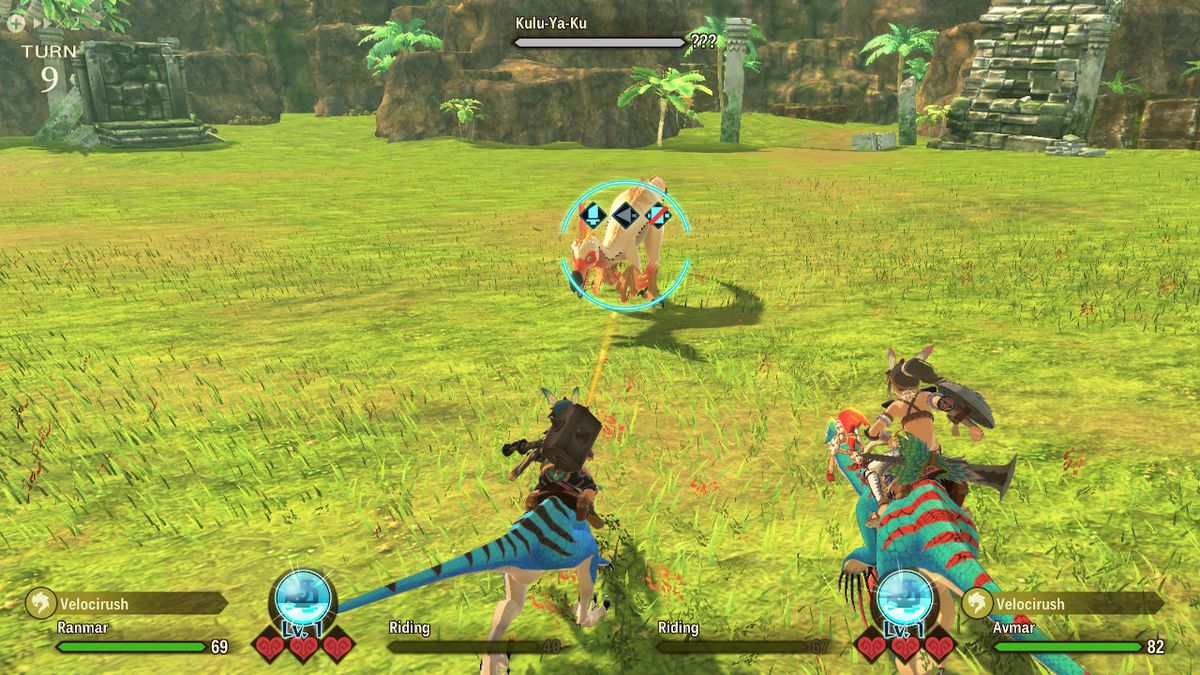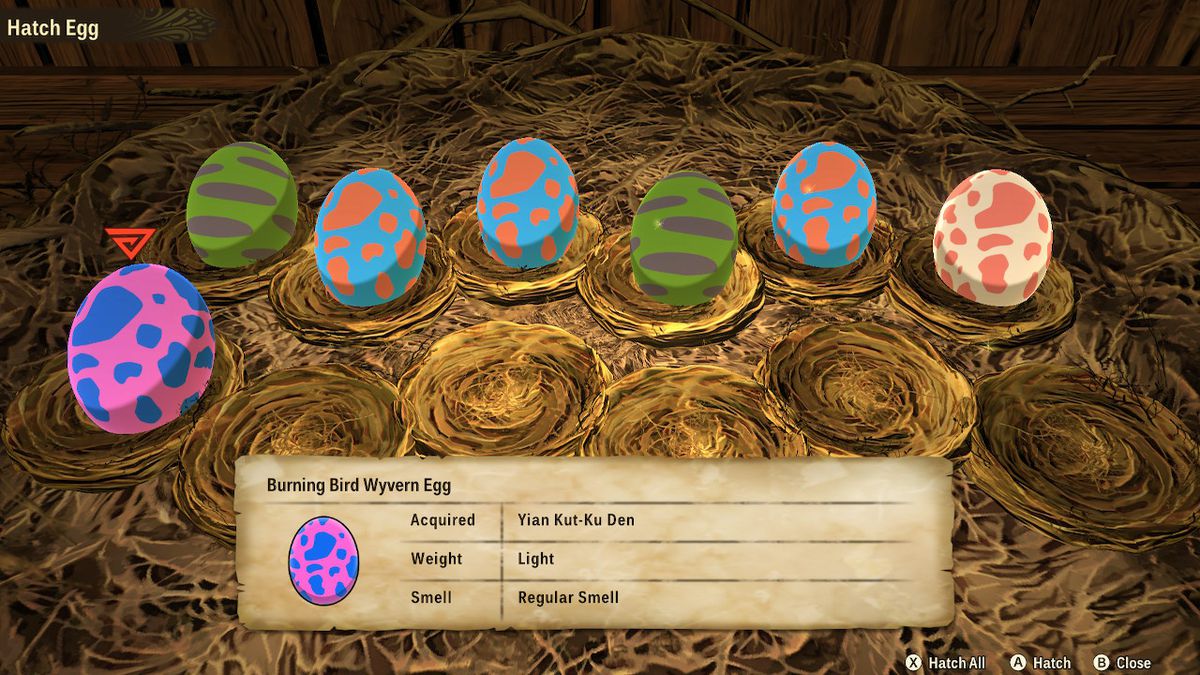I love Monster Hunter, but I try not to think about it too hard.
Monster Hunter is a series that asks me to kill big beasts with sharp fangs and occasionally cuddly tummies. More often than not, they’re existing peacefully in their own ecosystem before I waltz in with my giant horn of doom to turn them into hats, pants, and an entire ensemble for my cat. I cannot pluck a single feather and save the monster. It’s a kill-or-be-killed series, and I’ve collected a lot of pelts over the years.
With Monster Hunter Stories 2: Wings of Ruin, a follow-up to the 2016 turn-based RPG, I was looking forward to a more symbiotic relationship with the monsters. As a Rider, I get to work alongside a companion monster that I raise from birth, called a Monstie. But more often than not, my missions with my Monsties involve deadly battle with other monsters.
By highlighting the Rider-Monstie relationship, Monster Hunter Stories 2: Wings of Ruin makes me feel more like the bad guy than ever.
New world, same problem

In Monster Hunter Stories 2: Wings of Ruin, I get to control a Rider, not a Hunter. Riders aren’t quite as Longsword-happy when it comes to killing creatures. I see Royal Ludroths and other monsters sleeping around town when I stroll through my village collecting quests. Humans and monsters live in a symbiotic world — or at least, that’s the idea.
When I step outside the walls of my village, I’m joined by my Monstie, as well as a companion and their Monstie. Together, we journey forward to take care of some pesky monster or raid a den for eggs. It’s the same kind of attitude from the mainline series — “It’s a tough job killing these creatures, but somebody has to do it”— except it’s made more awkward by my Monstie’s presence.
There’s something a little off about entering into a battle with a pack of Velocidromes and using my Velocidrome companion, Ranmar, to help me fight them. It’s like walking down the street with your chihuahua, coming across an aggressive chihuahua in an alley, and then commanding your chihuahua to bite the other one while you and a friend kick it. Then, when you get back home, you make yourself a chihuahua suit out of the chihuahua you just slayed. And the next time you leave the house, you jump on your chihuahua’s back while wearing your chihuahua suit. I regret choosing such a small dog breed for this metaphor, but you get the point.
Watching two Pikachus fight in Pokémon doesn’t really bug me. But if the fight was to the death and I got to skin the losing Pikachu and wear it as a hat — with no regard for how my Pokémon would feel about that — the series would take on a different kind of tone.
Monster Hunter games often include justifications for all the monster-slaying, usually with some kind of blight or fellow monster that’s making the population of nearby beasts overly violent. Monster Hunter Stories 2 does something similar, bringing up the Black Blight from the original Monster Hunter Stories as a reason why some people lost faith in gentler monsters. This certainly helps justify their hunting — and I think many people will play Wings of Ruin without ever considering how their Monstie feels about killing a member of their own species — but when I’m diving into dens to kill monster parents and steal their eggs, it’s hard for me not to feel bad, no matter the justification.
Are we the baddies?

I’m only a dozen hours into Wings of Ruin, but I’ve come across a few characters who genuinely care about their monsters. In fact, the game wants me to feel like most of its characters believe that monsters can be good. There’s a companion who exiled herself alongside her Barioth when her fellow villagers were afraid of it. She apologizes to an angry monster before helping me take it down. Another character recognizes when a mother monster is “only trying to protect [her] kid.” But these platitudes exacerbate the issue for me even more.
Wings of Ruin paints a world where some monsters get to live among humans, work with us, eat donuts with us (seriously), and be loved by us. But what about the monsters who aren’t so lucky? What about the ones I’m going out of my way to kill in order to farm for experience points, or so I can make a big-ass sword to take down the next one, and the next one? Just as I could look at a completely virtual being, like a Tamagotchi, as a kid and think, “I love this pixel more than anything in this world,” I look at the bodies of the monsters I kill and can’t help but feel sad.
I know, on some level, that sympathizing with the monsters goes against the point of Monster Hunter. The word Hunter is in the damn title. When I sacrifice one Monstie to another to improve their genes in a super-special ritual, I’m not supposed to think about the Monstie that disappears; I’m supposed to get excited about how powerful my other Monstie becomes. But Monster Hunter Stories 2’s focuses hard on the relationship between Rider and Monstie, so I can’t help but see every creature as a potential friend.
Monster Hunter Stories 2: Wings of Ruin breaks for me when I murder the mom of every creature in my arsenal and indoctrinate them from birth to fight in my tiny, Monstie army. And in turn, it makes me wonder about the creatures I’m supposed to care for. Is raising them to fight against their fellow monsters actually any better than turning them into hats? Sometimes I’m not too sure. I was hoping Monster Hunter Stories 2 would help me figure that out, but instead, I just feel like a different brand of tyrant.
I still love Monster Hunter. I still have to try not to think about it too hard.
Polygon – All
Source link
Related Post:
- Capcom Announces E3 2024 Showcase Featuring Monster Hunter Rise, Monster Hunter Stories 2 and More
- Monster Hunter Rise and Monster Hunter Stories 2 collaboration event, and more coming this month
- Capcom dates Monster Hunter Rise’s first collab event, Monster Hunter Stories 2 demo • Eurogamer.net
- Monster Hunter Rise First Collab Event Date Announced; Monster Hunter Stories 2 Demo
- Chivalry 2 makes me feel unstoppable
- Monster Hunter Stories 2 Monster Behavior is No Longer Randomized
- Monster Hunter Stories 2 Monster Attack Types & Weaknesses list
- Monster Hunter Stories 2 monster list
- Monster Hunter Stories 2 Review: When Pokemon Meets Monster Hunting
- Monster Hunter Rise vs. Monster Hunter World – 15 BIGGEST DIFFERENCES
